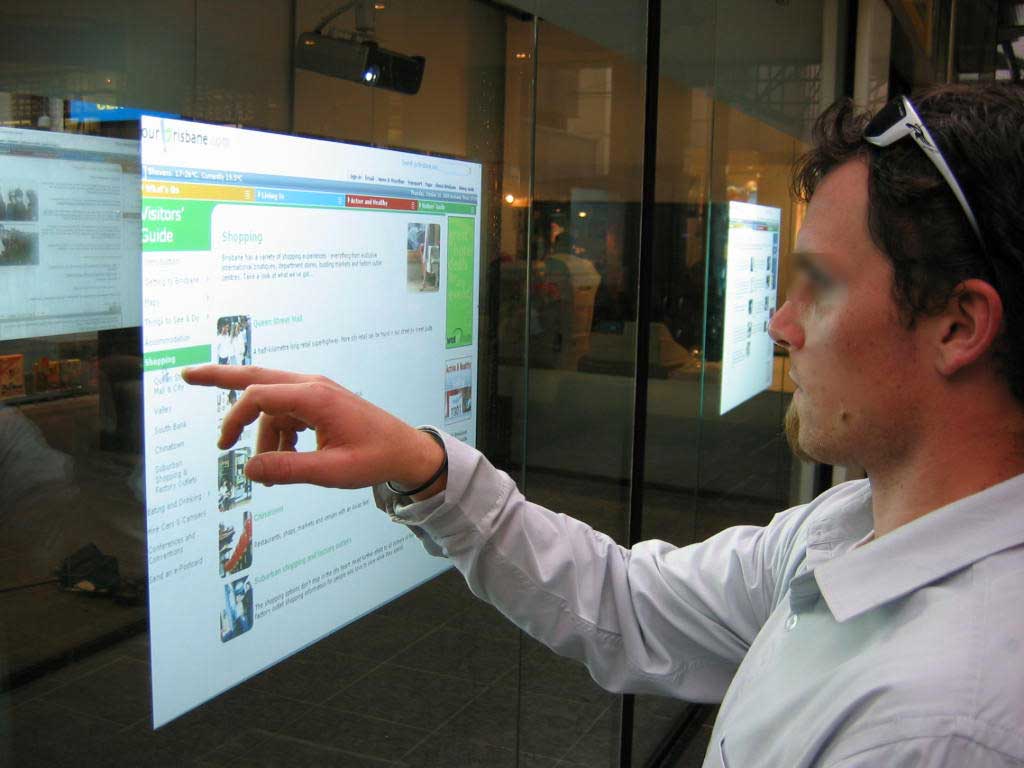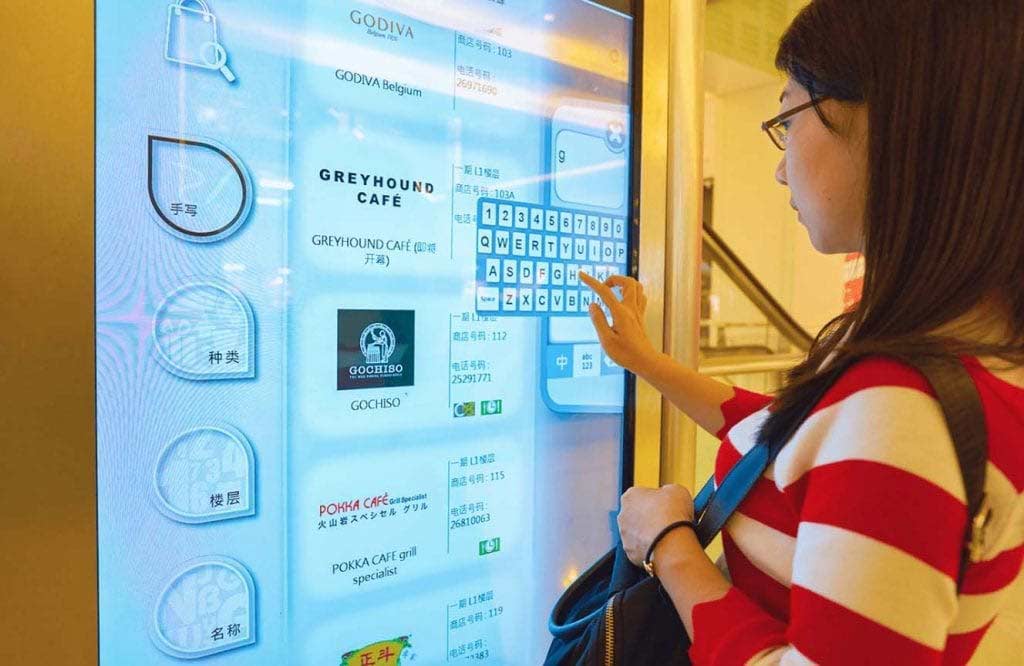5 ways to improve viewer engagement
Digital screens are becoming increasingly popular for generating viewer engagement. From retail stores to entertainment venues, digital signage is changing the way businesses communicate with their audiences. As digital signage technologies continue to evolve, we see this trend accelerate in the coming years.
The viewer engagement challenge
One of the most effective ways to enhance viewer engagement is to incorporate unique digital signage software features such as interactivity and live information in the content mix. Making sure content is tailored to viewer interests will also keep the audience’s attention. Not surprisingly, research has found that personalizing the messaging to the audience improves response rates by 70% or more.
To further increase viewer engagement, you should deploy a combination of text, graphics, video, and real-time data to all your displays. Using audience analytics tools will also help you better understand viewer preferences and interests so you can adapt your programming accordingly.

Digital screen strategies that deliver
Digital signage offers an effective way to screen messages to large audiences. It is used in retail stores, sporting venues, and hospitality suites. Viewer engagement is crucial for digital signage operators and content creators. This article discusses five strategies to improve viewer engagement. These include preparing compelling content, using purposeful design, timing messaging carefully, employing interactivity, adding animations, leveraging multiple screens, and A/B testing creative layouts and ideas. Gain the knowledge you need to make your digital signage software engage viewers effectively.
Creating an engaging and motivating work environment
All in all, conference room digital signage offers numerous advantages when it comes to informing and motivating meeting attendees. Through its ability to provide detailed visuals alongside messaging tailored specifically towards one audience segment or another; businesses can ensure that meetings run smoothly while simultaneously creating a friendly working environment that encourages collaboration and productivity.
Businesses can also use conference room digital signage to boost morale in the workplace. For example, companies often use these solutions to highlight team achievements such as awards won or projects completed on time. Doing so helps remind everyone in attendance about why they do what they do and why they need to continue striving for excellence. Additionally, businesses may use their meeting room digital signage to screen motivational quotes which give employees even more incentive to stay focused on their tasks at hand.
Our top 5 viewer engagement tips
1. Use dynamic visuals that are creative, eye-catching, and capture viewer interest immediately
Creative visuals are essential for viewer engagement. Whether it’s static imagery, motion graphics, or interactive elements – dynamic visuals are perfect at capturing viewer interest.
Good visuals certainly grab attention and create an immediate connection with the viewer. So why not use this opportunity to draw people in further? Do something that sets your work apart from the rest and gives potential clients or customers a positive view of your business. Crafting beautiful custom visuals takes some thought, but the impact it will have on viewer engagement is worth the effort.
When appropriate, consider template layouts that let you incorporate multiple forms of content on a single screen.
Templates can be used to screen a mix of:
- Multimedia: static images, video (ads, public service announcements…)
- Live data: breaking news, weather updates, traffic reports…
- Dynamic data: product pricing, business dashboards with performance statistics…
When deploying multiple screens, make sure your content is perfectly synchronized and plays smoothly across each display. Create compelling content, such as animations that move seamlessly from one screen to the next. Think outside the box and use attractive visual elements like intricate typography and minimalist design to stand out from the crowd.
Also, keep your message short and sweet – viewers don’t want too much text in their visuals but emphasizing a brief yet powerful message can have a deeper impact. Make sure you get viewers hooked with dynamic visuals right from the start!
2. Clearly state your message – make sure it is succinct and directly related to what viewers will be expecting
Focus your message and ensure it is easily understood, even by passersby. You have only a few seconds to create a good impression, so design your content for easy absorption. The story you want to tell should be clear and easily comprehensible.
Consider the screen’s location and the audience’s dwell times. Is it in a busy hallway or inside an elevator cabin? This determines the appropriate content to publish. Short animations or static content work well when viewers have limited time.
For locations where viewers have more time, either standing or sitting, opt for long-form content like short videos and live news. A clear and targeted message ensures an optimal viewer experience, so ensure your content is relevant and suitable. This will boost viewer engagement and increase the success of your content.

3. If possible, use interactive content and present viewers with this information in an easily accessible manner
It’s important to keep viewer engagement in mind when creating new digital signage content. By leveraging interactive content and presenting viewers with information in an easily accessible manner, you can create experiences that stand out from the rest. This could be anything from a call to action that triggers new content via a touch screen, to computer vision software that launches unique content based on the audience’s demographic makeup.
Using computer vision, digital signage displays can detect who is looking at the screen so it can switch content on the fly. Screens can be programmed to show a very specific ad to a female audience and switch to different ads when there is a male viewer. Ad delivery can be based on the viewer’s age range, gender, or any other discernable feature.
Not only does this make it easier for viewers to obtain information, but it also helps draw them in and make them part of the story. Remember that interactivity is “sticky”, so viewers will be more easily engaged. They will also retain more information which is perfect for brands that are trying to stand out from the crowd.
4. Analyze viewer data to modify content based on their attention span and behavior, making it as relevant and interesting as possible
As digital screen usage continues to soar, analyzing viewer data and modifying content to match expectations and preferences has become essential. Keeping the content fresh, relevant, and interesting is key to most digital signage network operators, advertisers, and brand owners.
Audience analysis software tools that use AI technology can sift through vast amounts of data and deliver actionable insights about your viewers. Knowing who looks at each screen and understanding why is critical to success. You can rely on audience analytics to calibrate your message by testing different versions of your content in similar locations. This way you get to try out new ideas before publishing your content across multiple sites.
From examining demographic info to tracking viewership numbers, leveraging viewer data allows businesses to maximize viewer engagement while making sure they are delivering the content that viewers expect.
5. Ensure that your digital signage system offers an excellent experience through content optimization
Making sure your digital screens are running at their peak performance is key for viewer engagement. Optimizing the performance of your digital signage content helps ensure viewers always have a pleasant experience.
Always create content that is designed for the purpose. Be aware of screen resolutions, aspect ratios, and screen orientations. There is nothing worse than content that appears pixelated or distorted as this will impact your message.
When dealing with content that will span multiple screens, such as with restaurant menu boards or video walls, make sure your template layouts are properly sized and scaled. Take into account screen bezels when laying out your text so it’s not cut off or misaligned.
Optimizing your content offers a seamless viewer experience, so your message can reach a wider audience. Keep in mind that it’s important to troubleshoot any potential issues and make sure everything is running smoothly before going live!
By following these 5 simple steps, you will drastically improve viewer engagement and your digital signage deployment will be more successful.
Recommended Hardware
For Navori Stix 3700 digital signage deployment, a hardware recommendation should prioritize high-performance components to support dynamic visuals and real-time data. An ideal setup would include a powerful processor like an Intel Core i5 or i7, paired with at least 16GB of RAM for multitasking and smooth operation. Graphics capability is crucial, so an integrated graphics card such as NVIDIA GeForce GTX or AMD Radeon RX series is essential for seamless playback of multimedia content.
SSD storage of at least 256GB ensures fast boot times and content loading, while a variety of connectivity options like HDMI, DisplayPort, and USB ports facilitate easy integration with different displays and peripherals. Compact form factor solutions like Intel NUC provide versatility for installation in various environments, while reliability and durability are ensured through reputable manufacturers known for commercial-grade hardware. Compatibility with Navori Stix 3700 software and support for preferred operating systems like Windows 10 Pro or Linux are also key considerations for a successful digital signage deployment.
